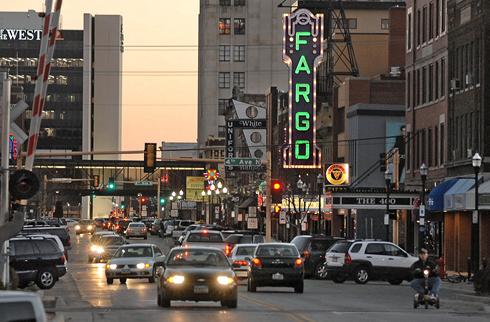John Dorso: Renaissance Zone Policy Due For Some Refinement

I noticed Senate Bill 2329 concerning Renaissance Zones has been introduced. Since I was involved in the passage of the original enabling legislation I was curious as to what it concerned. As you are aware the creation of the RZ’s has been a big success in North Dakota and has garnered considerable interest in other parts of the country.
The original intent of the legislation was to revitalize the inner core of cities and towns throughout North Dakota. From the reports I have received it has been successful in accomplishing that objective.
My original concern was that cities and towns had infrastructure bought and paid for by the taxpayers that was being underutilized. As business moved out of the old business districts they were leaving behind streets, sewers, water etc. that was slowly being abandoned but still had to be maintained by the municipalities at a cost to the taxpayers. This was never more apparent then when I visited Detroit, Michigan in the early 90’s on a legislative leadership trip. If you have been reading the headlines Detroit is still in financial distress because it has never really addressed the underlying issues of its slow demise. Vast areas of the city lay in ruins with a total loss of tax base (valuation) to support the infrastructure. I saw the same thing slowly happening in my home town of Fargo and other towns in North Dakota.
I would like to congratulate the sponsors of the bill suggesting updates to some of the provisions of the original legislation. I always expected that certain parts would need attention in the future as nothing is static especially real estate development.
I agree that the cap on credits as amended in Section two needs an update. After 15 yrs. the pace of inflation certainly needs to be caught up with.
I am not in agreement with the first section that amends the size of the zones. The original RZ size was agreed to as a compromise so that the legislation would fit large and small municipalities. I perceived that a relatively small zone would be more of an encouragement for the type of investment we hoped to occur. High dollar investment would over time yield more taxable valuation for the citizens of the towns which had been supporting the underutilized infrastructure.
I did envision that TIF areas would overlay the RZ’s but I did not think that the RZ’s would go on forever contributing tax dollars to a TIF and not to the general fund of the municipalities. I don’t know how that has come to be but I think it should be discouraged as that was not my intent.
As an explanation I thought RZ’s should be like lake front property. Because it is limited and not a lot becomes available water front properties fill in with high dollar investment real estate because the land is expensive and gets more so as development occurs. As such the RZ should be limited in geography so that developers find the tax incentives attractive but in limited supply. As the RZ fills the opportunity to access the tax incentives will drive the price of the remaining land higher thus rendering a higher valuation for the subsequent years when the investments use up the tax incentives. The intent was to use the all ready built infrastructure to encourage high investment development. The subsequent valuation would not only support the infrastructure but return to the municipalities the tax dollars that were lost as the property became devalued.
Rather than increase the size of an RZ my original thought was that a city would slip the foot print in one direction or another as blocks filled in. Those properties adjacent to the original RZ are probably in as need of revitalization as those in the RZ. If you just increase the size you are making the opportunities for developers larger but not necessarily increasing the value. The supply and demand theory is an axiom in real estate development.
In closing it would be a good idea for the legislature to look into the relationship of TIPs to RZs as it relates to total tax revenue that cities and their sub divisions collect to their general fund. If the money an RZ generates in future years doesn’t accrue to the political sub-divisions general funds I missed something in the drafting of the original legislation.
I still believe in the concept of the RZs and I look forward to the North Dakota legislature refining the product we put on the books over 15 years ago.




